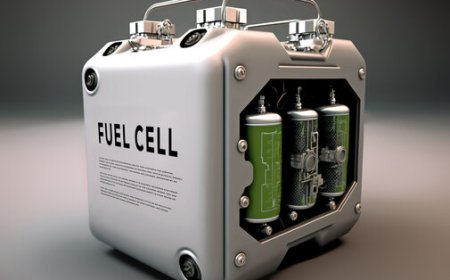Root Cause Analysis An Essential Lean Tool for Operational Excellence
Discover the importance of Root Cause Analysis as a crucial Lean tool. Learn how it enhances operational efficiency and fosters continuous improvement.

In the fast-paced world of modern business, organisations constantly strive to improve efficiency, reduce waste, and enhance productivity. At the heart of this endeavour lies Lean methodology, a powerful approach that champions operational excellence. One of the most pivotal tools within Lean is Root Cause Analysis (RCA). This technique not only identifies the underlying causes of problems but also enables sustainable solutions, fostering a culture of continuous improvement. This blog explores the significance of RCA as a Lean tool, its methodology, benefits, and real-world applications.
Understanding Root Cause Analysis
Root Cause Analysis is a problem-solving method used to identify the primary cause of defects or issues. Instead of addressing symptoms, RCA digs deeper to uncover the fundamental problems, thereby preventing recurrence. This approach aligns perfectly with Lean principles, which focus on eliminating waste and creating value.
The Methodology of RCA
At its core, RCA involves several key steps:
-
Define the Problem: Clearly articulate the issue. A well-defined problem statement is critical for effective analysis.
-
Collect Data: Gather relevant information to understand the context and impact of the problem.
-
Identify Possible Causes: Brainstorm potential causes with cross-functional teams to ensure a comprehensive view.
-
Determine the Root Cause: Use analytical tools such as the "5 Whys" or Fishbone Diagram to identify the root cause.
-
Implement Solutions: Develop and execute corrective actions that are practical, sustainable, and measurable.
-
Monitor and Sustain: Evaluate the effectiveness of solutions over time to ensure the problem does not recur.
Tools and Techniques
Several tools support the RCA process, each offering unique benefits:
-
The 5 Whys: An iterative technique that involves asking why repeatedly until the root cause is identified. It helps teams move beyond superficial symptoms.
-
Fishbone Diagram: Also called the Ishikawa or Cause-and-Effect Diagram, it visually categorises potential causes under key areas like manpower, methods, materials, and machines.
-
Pareto Analysis: Based on the Pareto Principle, it identifies the most significant contributors to a problem, helping prioritise actions.
-
Failure Mode and Effects Analysis (FMEA): A proactive tool used to evaluate potential failures and their impact, helping mitigate risks before they occur.
The Role of RCA in Lean Methodology
Root Cause Analysis is integral to Lean because it embodies the philosophy of continuous improvement and waste reduction. By addressing root causes, organisations can eliminate non-value-adding activities, improve process efficiency, and enhance quality. RCA supports Lean efforts in several ways:
Promoting a Problem-Solving Culture
Lean thrives on a culture of ownership and problem-solving. RCA empowers employees at all levels to address issues, shifting the mindset from blame to opportunity. This fosters engagement and strengthens Lean consulting implementation.
Enhancing Process Efficiency
RCA helps streamline operations by removing the root causes of inefficiency. This leads to improved cycle times, fewer disruptions, and greater process consistencyall essential to Lean performance.
Enabling Data-Driven Decisions
RCA is built on data analysis and objective thinking. By basing decisions on evidence rather than assumptions, organisations implement more effective and reliable solutions.
Ensuring Long-Term Success
Unlike short-term fixes, RCA provides lasting improvements by tackling fundamental problems. This leads to sustainable results that support long-term Lean success.
Real-World Applications of RCA
RCA has widespread applications across industries:
Manufacturing
In manufacturing, RCA is used to reduce machine downtime, eliminate defects, and improve productivity. By identifying the cause of repeated breakdowns, manufacturers can implement preventive actions that optimise performance.
Healthcare
In healthcare, RCA is vital for improving patient safety. By investigating incidents such as medication errors or surgical complications, hospitals can create safer systems and procedures.
Service Industry
In service sectors, RCA helps improve customer satisfaction by analysing complaints and service failures. Identifying systemic issues allows for targeted improvements that enhance the overall customer experience.
Conclusion
Root Cause Analysis is a foundational tool in the Lean toolkit, offering a structured and effective method for solving problems and driving continuous improvement. By uncovering and addressing root causes, organisations can reduce waste, improve quality, and achieve operational excellence. In an era where delivering consistent value is essential, RCA provides a practical pathway to sustainable success. Embracing this Lean tool not only equips organisations to resolve current issues but also empowers them to build a culture capable of overcoming future challenges.






























